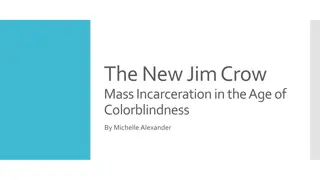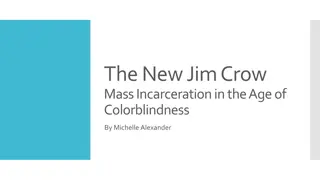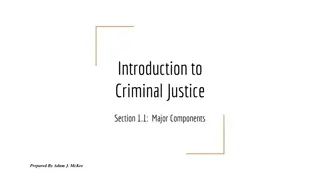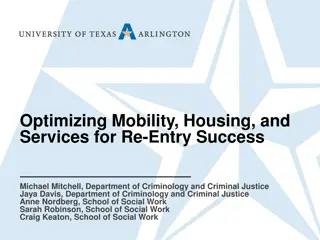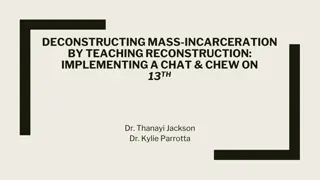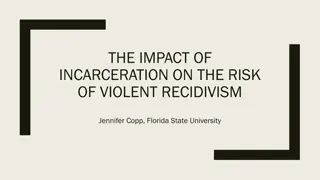Facts about Incarceration in the United States
Revealing statistics on the US prison system from the book "Just Mercy" by Bryan Stevenson, shedding light on issues such as racial bias, mental illness, juvenile incarceration, and the exponential increase in imprisonment rates over the years.
Download Presentation

Please find below an Image/Link to download the presentation.
The content on the website is provided AS IS for your information and personal use only. It may not be sold, licensed, or shared on other websites without obtaining consent from the author.If you encounter any issues during the download, it is possible that the publisher has removed the file from their server.
You are allowed to download the files provided on this website for personal or commercial use, subject to the condition that they are used lawfully. All files are the property of their respective owners.
The content on the website is provided AS IS for your information and personal use only. It may not be sold, licensed, or shared on other websites without obtaining consent from the author.
E N D
Presentation Transcript
JUST MERCY BY BRYAN STEVENSON Common Read Selection 2017-2018 Interested in the programming? Contact the English Department
FACT: From the 1970s to 2014, the U.S. prison population has increased from 300,000 to 2,300,000; the highest incarceration rate in the world.
FACT: The case of McCleskey v. Kemp presented convincing empirical evidence that the race of the victim is the greatest predictor of who gets the death penalty in the United States. In Georgia, offenders were eleven times more likely to get the death penalty if the victim was white than if the victim was black. In Alabama, even though 65 percent of all homicide victims were black, nearly 80 percent of the people on death row were there for crimes against victims who were white.
FACT: By 2010, Florida had sentenced more than a hundred children to life imprisonment without parole for non- homicide offenses. All of the youngest condemned children thirteen or fourteen years of age were black or Latino.
FACT: Today, more than 50 percent of prison and jail inmates in the United States have a diagnosed mental illness, a rate nearly five times greater than that of the general adult population.
FACT One in every fifteen babies born in 2001 is predicted to spend time in jail. One in three black males born in this century is predicted to be incarcerated.
FACT The United States has sent a quarter of a million children to adult prisons and jails, some are under the age of twelve.
FACT: The number of women in prison has increased 640 percent in the last thirty years.
FACT: Spending on jails and prisons by state and federal governments has risen from $6.9 billion in 1980 to nearly $80 billion in 2014.
CASE: WALTER MCMILLIAN Served 7 years on death row (2 before being convicted) Evidence of witness coercion by authorities.
FACT: By the mid-1980s, nearly 20 percent of the United States jail and prison population had served in the military. While the rate declined in the 1990s as the shadows cast by the Vietnam War began to recede, it started to rise again as a result of the military conflicts in the Middle East.
FACT: The Supreme Court upheld the death penalty for juveniles in a 1989 ruling; a year earlier the Court barred the death penalty for children under the age of fifteen.
FACT: Approximately 75 to 80 percent of incarcerated women (most of whom are non-violent offenders) are mothers with minor children who have become more vulnerable and at-risk and will remain so even after their mothers come home.
FACT: By 2010, the number of annual executions fell to less than half the number in 1999. Several states were seriously debating ending the death penalty. New Jersey, New York, Illinois, New Mexico, Connecticut, and Maryland all took capital punishment off the books.
FACT: Even when exonerated for a wrongful conviction, the original false conviction can remain on a person s records and can influence their ability to be employed or find housing.



